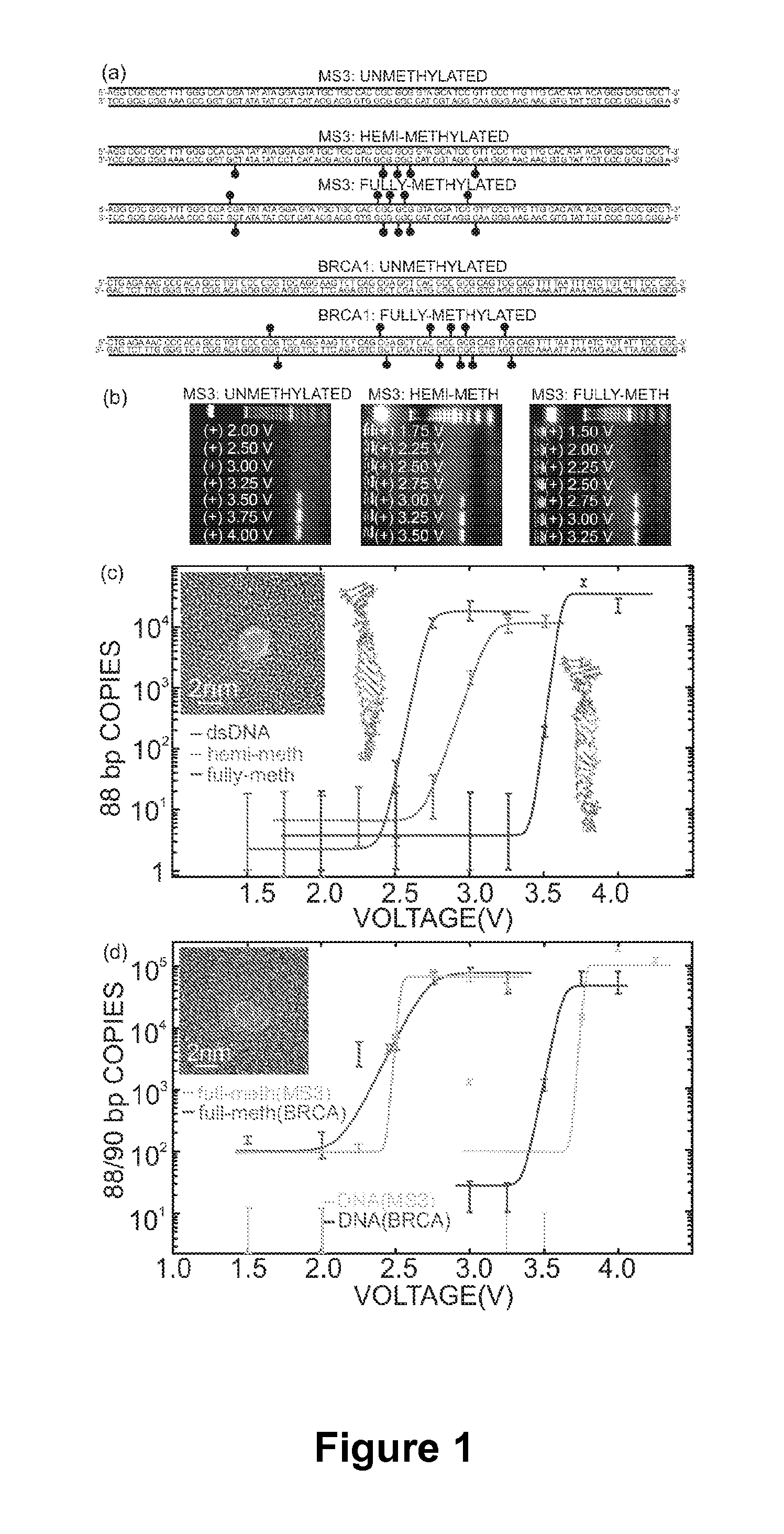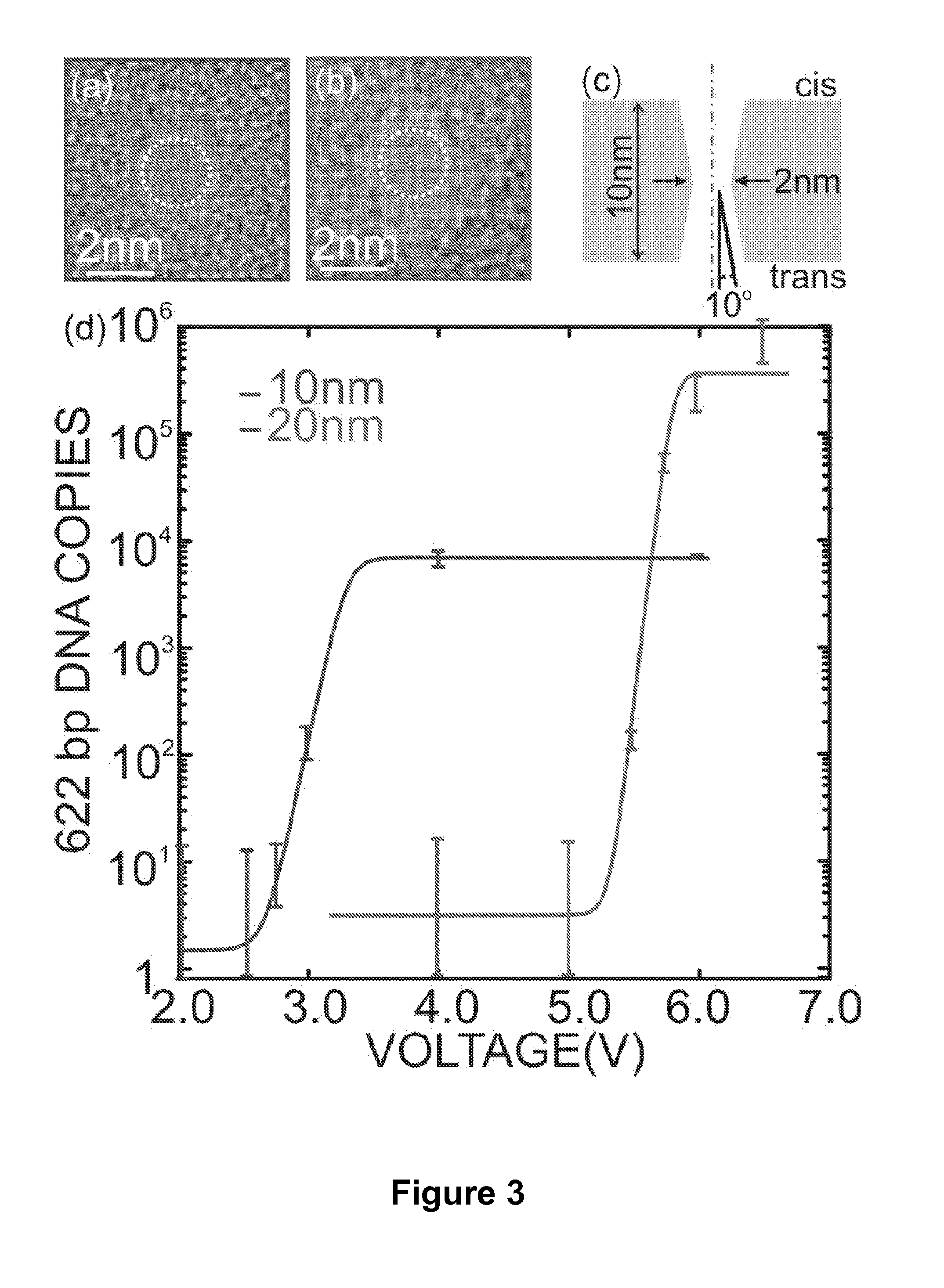Detecting and Sorting Methylated DNA Using a Synthetic Nanopore
a synthetic nanopore and methylated dna technology, applied in the field of detecting and sorting methylated dna using a synthetic nanopore, can solve the problems of difficulty in purifying cut fragments, lack of specificity, difficulty in detecting sample loss, etc., and achieve the effects of convenient dna methylation analysis, sorting and detection, and reliable, accurate and relatively simple methods of analyzing dna methylation
- Summary
- Abstract
- Description
- Claims
- Application Information
AI Technical Summary
Benefits of technology
Problems solved by technology
Method used
Image
Examples
example 1
REFERENCES FOR EXAMPLE 1
[0068]1. Brena, R. M., T. H. M. Huang, and C. Plass. 2006. Toward a human epigenome. Nature Genetics 38:1359-1360.[0069]2. Heinemann, U. and M. Hahn. 1992. CCAGGC-m5C-TGG. Helical fine structure, hydration, and comparison with CCAGGCCTGG. Journal of Biological Chemistry 267:7332-7341.[0070]3. Nathan, D. and D. M. Crothers. 2002. Bending and flexibility of methylated and unmethylated EcoRI DNA. Journal of Molecular Biology 316:7-17.[0071]4. Bell, A. C. and G. Felsenfeld. 2000. Methylation of a CTCF-dependent boundary controls imprinted expression of the Igf2 gene. Nature 405:482-485.[0072]5. Catteau, A. and J. R. Morris. 2002. BRCA1 methylation: a significant role in tumour development? Seminars in Cancer Biology 12:359-371.[0073]6. Ho, C., R. Qiao, J. B. Heng, A. Chatterjee, R. J. Timp, N. R. Aluru, and G. Timp. 2005. Electrolytic transport through a synthetic nanometer-diameter pore. Proceedings of the National Academy of Sciences 102:10445.[0074]7. Heng, J....
PUM
| Property | Measurement | Unit |
|---|---|---|
| thickness | aaaaa | aaaaa |
| pore diameter | aaaaa | aaaaa |
| pore diameter | aaaaa | aaaaa |
Abstract
Description
Claims
Application Information
 Login to View More
Login to View More - R&D
- Intellectual Property
- Life Sciences
- Materials
- Tech Scout
- Unparalleled Data Quality
- Higher Quality Content
- 60% Fewer Hallucinations
Browse by: Latest US Patents, China's latest patents, Technical Efficacy Thesaurus, Application Domain, Technology Topic, Popular Technical Reports.
© 2025 PatSnap. All rights reserved.Legal|Privacy policy|Modern Slavery Act Transparency Statement|Sitemap|About US| Contact US: help@patsnap.com



